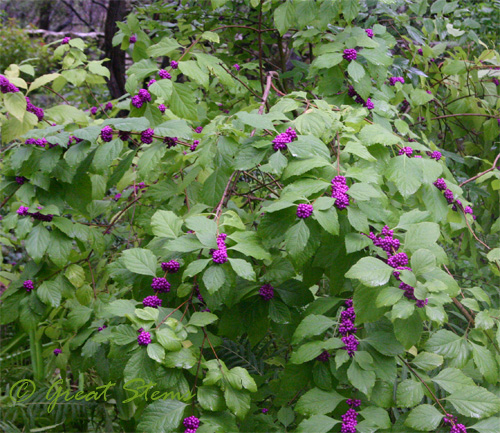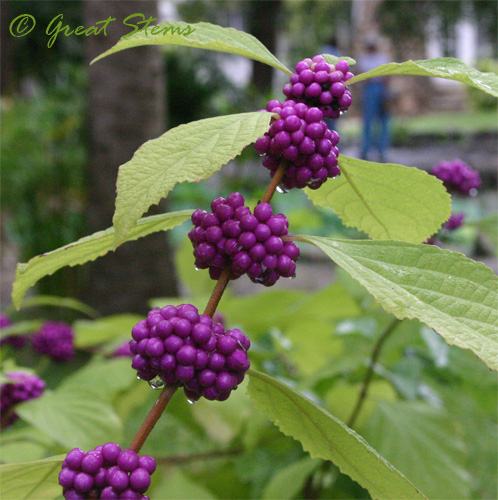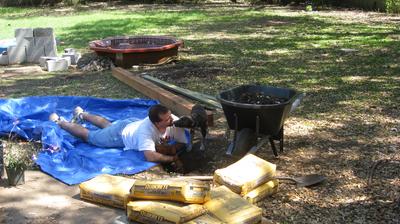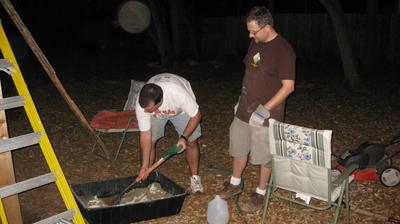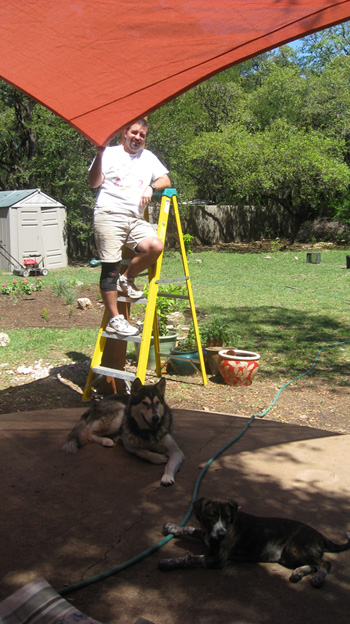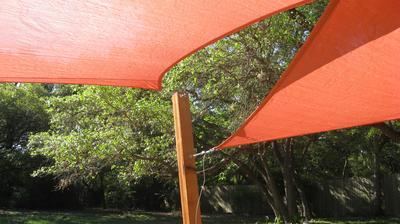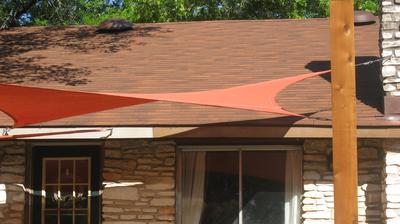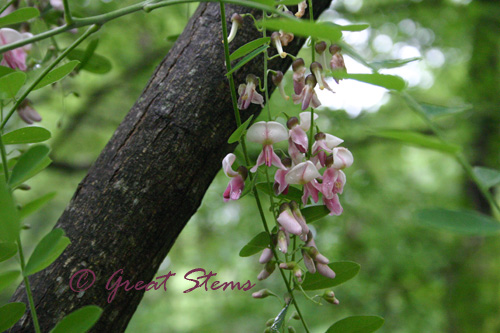 Eve's Necklace, Styphnolobium affine/Sophora affinis, also known as Texas Sophora. I once underappreciated this small native tree growing wild in my sideyard, because as a young and small sapling dominated by the cedar elms above it, it was hard-pressed to grab my attention.
Eve's Necklace, Styphnolobium affine/Sophora affinis, also known as Texas Sophora. I once underappreciated this small native tree growing wild in my sideyard, because as a young and small sapling dominated by the cedar elms above it, it was hard-pressed to grab my attention.
As the small saplings became bigger, however, I began to notice the black string of pearls -- its seed pods -- for which it earned its name.
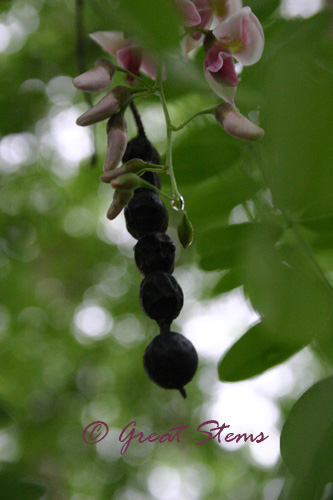
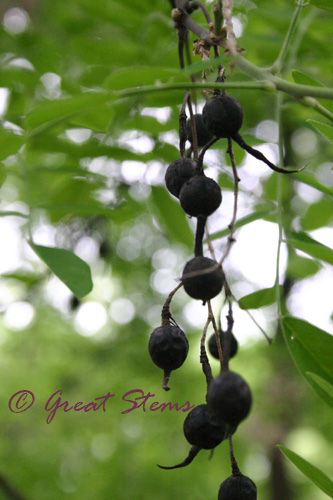
And its light to dark green leaflets I always dubbed as "cute." I'm so technical.
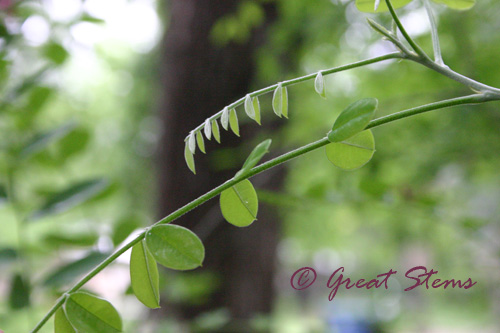
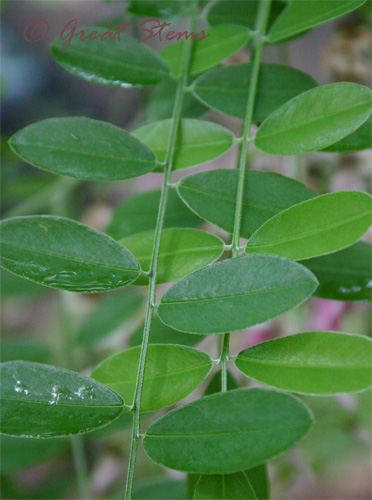 This spring, however, the pink wisteria-like blooms finally caught my eye, and I have been spending many a morning gazing up at the somewhat wispy understory trees.
This spring, however, the pink wisteria-like blooms finally caught my eye, and I have been spending many a morning gazing up at the somewhat wispy understory trees.
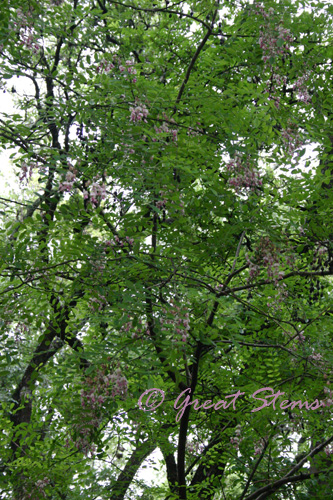
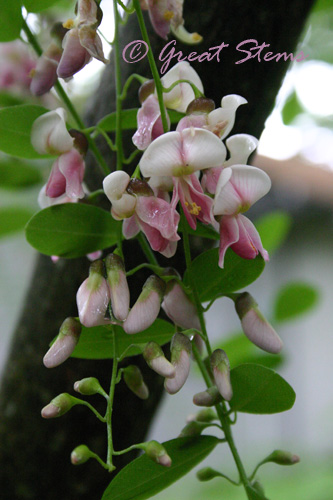 With more available sun, I know, it gets much denser and takes on the more classic tree look. It can also eventually reach 30 ft, but my tallest is about 15 feet, and I suspect it will always stay less than 25 feet tall due to its location under the much larger shade trees.
With more available sun, I know, it gets much denser and takes on the more classic tree look. It can also eventually reach 30 ft, but my tallest is about 15 feet, and I suspect it will always stay less than 25 feet tall due to its location under the much larger shade trees.
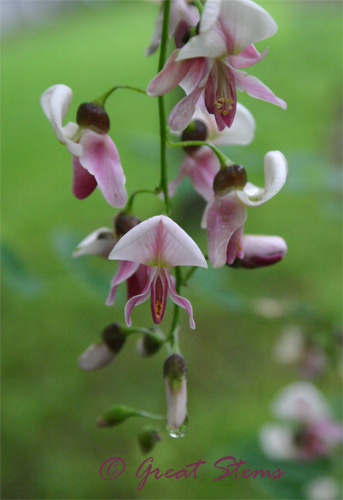 Eve's Necklace loves alkaline soil, of which I have plenty, and it is quite adaptable as long as the earth is well-drained. It's fairly fast-growing and germinates well on its own. It's native to Central Texas and hardy to Zone 7.
Eve's Necklace loves alkaline soil, of which I have plenty, and it is quite adaptable as long as the earth is well-drained. It's fairly fast-growing and germinates well on its own. It's native to Central Texas and hardy to Zone 7.
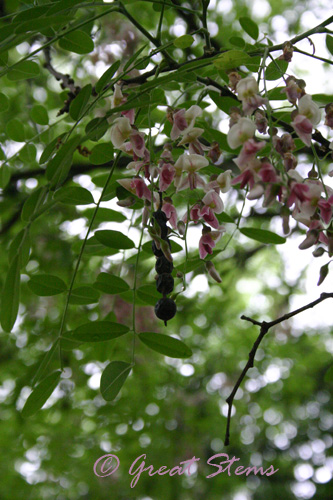 The tree has moderate deer resistance, but the deer in my neighborhood have left the saplings alone. It serves as a pollen and nectar source, and when dense enough it's a good nesting and cover site.
The tree has moderate deer resistance, but the deer in my neighborhood have left the saplings alone. It serves as a pollen and nectar source, and when dense enough it's a good nesting and cover site.
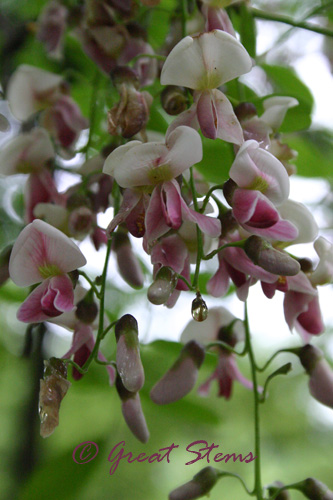
There's an advantage to living in a place for years and not doing anything with it -- one is that sometimes you get to find gems like Eve's Necklace coming up naturally. I think that I'll scatter the seeds about to get some growing in other places around my yard. I won't eat them though (not that I would) -- they're poisonous!
EDIT: My husband's response to reading this was "Huh." Turns out he had no idea we had Eve's Necklace in our yard (he'd probably never heard of it either). It's a good thing I write this blog, so he can learn about our yard!
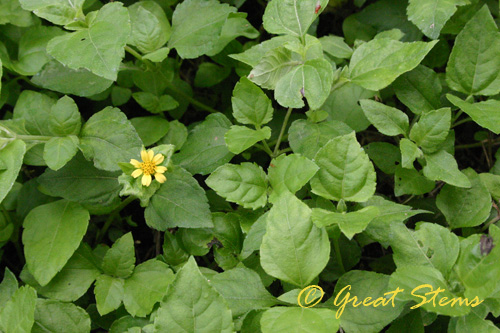
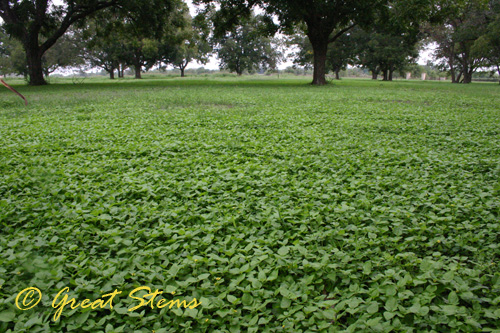
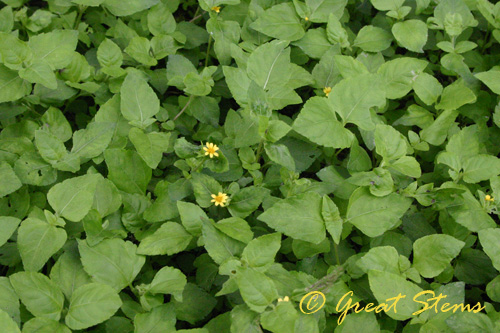
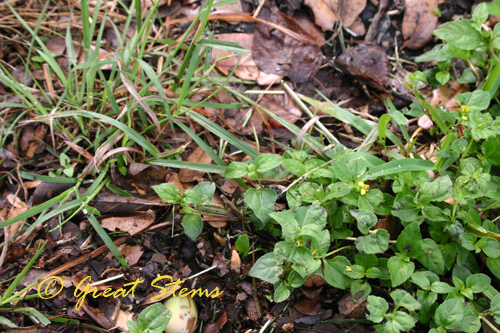
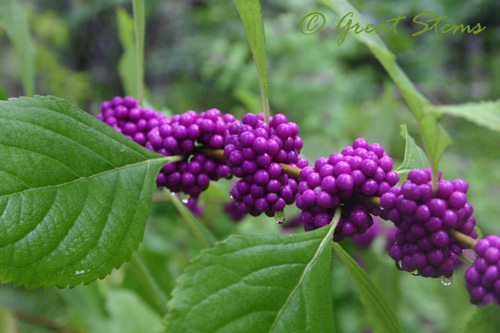 But aside from its beauty, what makes this shrub truly valuable is that it is a fall and winter food source for more than 40 different songbird species, as well as other birds. It also is enjoyed by mammalian wildlife, including the opossum and raccoon. Its deer resistance probably depends on your area and the harshness of seasonal weather. In some areas, deer leave the mature plants alone, but they're happy to nibble on young shrubs and sometimes the berries. In general, though, it's best to plant the shrub in a protected area if you are concerned about deer.
But aside from its beauty, what makes this shrub truly valuable is that it is a fall and winter food source for more than 40 different songbird species, as well as other birds. It also is enjoyed by mammalian wildlife, including the opossum and raccoon. Its deer resistance probably depends on your area and the harshness of seasonal weather. In some areas, deer leave the mature plants alone, but they're happy to nibble on young shrubs and sometimes the berries. In general, though, it's best to plant the shrub in a protected area if you are concerned about deer.